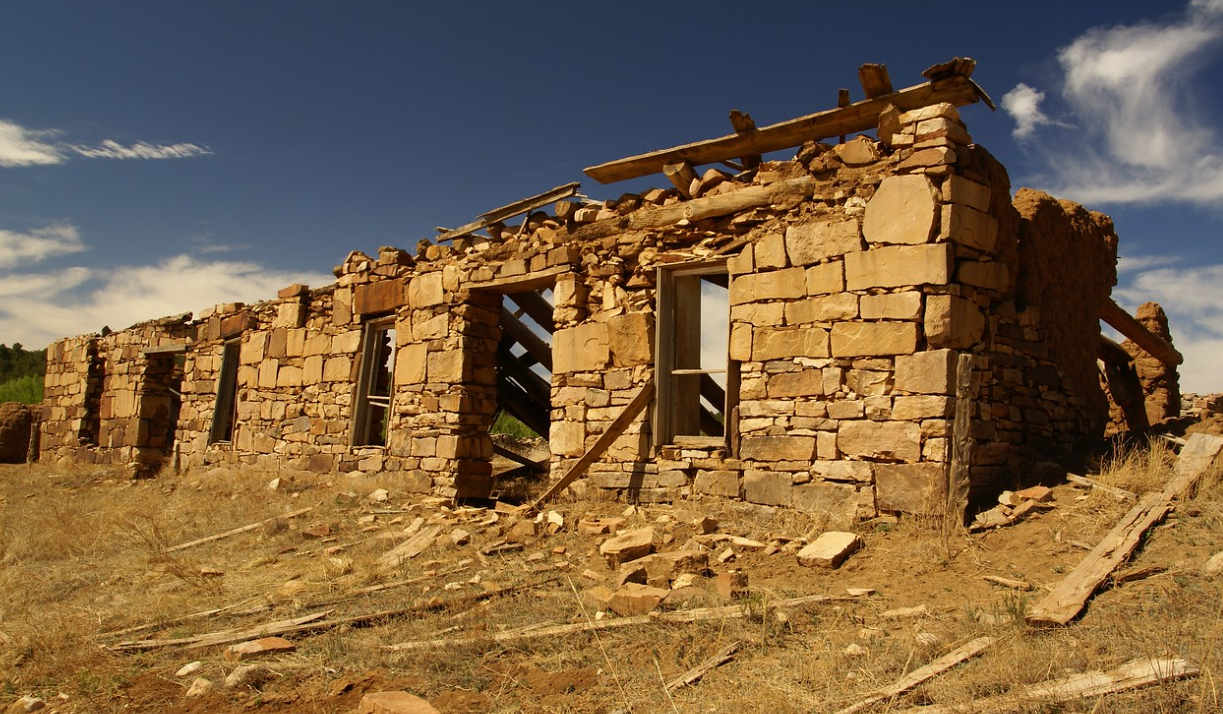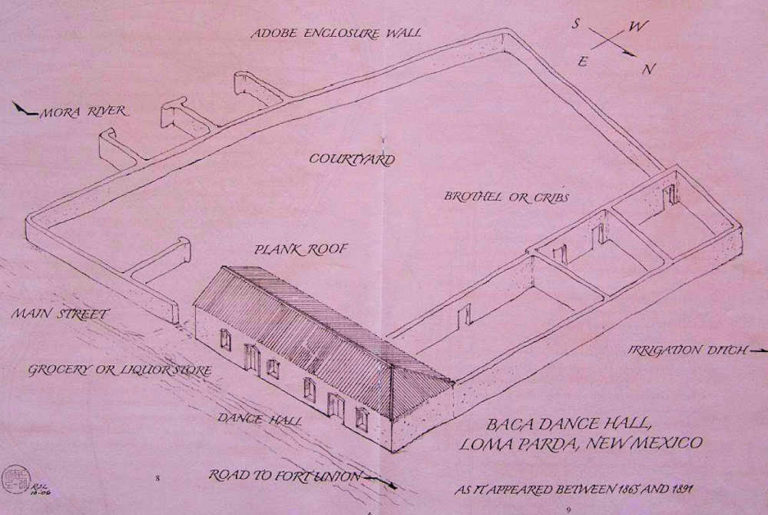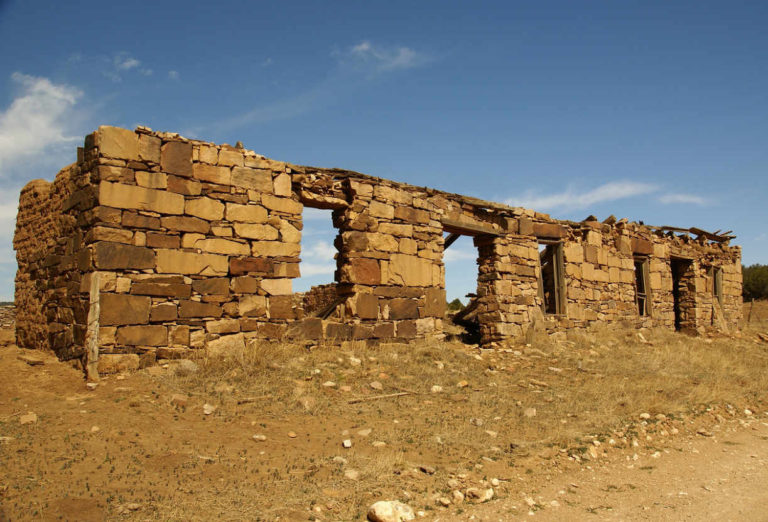Julian Baca’s dance hall, casino, and cantina was on the west side of the main street. The 75-foot-long side facing the street was built of large native stones, pierced by four windows and two doors. The north face was roughly 135 feet in length. I walked through the high grass now covering the crumbling ruins and attempted to identify rooms, walls, and doorways. There seem to be two additional rooms extending west, with several piles of rocks beyond them, as shown in the sketch. These piles looked like the remains of the one-room “cribs,” where women entertained men in bed. (Similar out-buildings can be found behind the McMartin general store.) The dance hall had two orchestras, each playing a 12-hour shift, since soldiers with night duty came to Loma Parda in the daytime, and vice versa. The orchestra usually consisted of a violin and a guitar, playing waltzes and square dances. Vicente C. de Baca was very popular with the dancers, since he could call square dances in both English and Spanish.

Who were the dance partners? Some were girls imported from Las Vegas or Santa Fe. Others were local girls. The close family ties in a small Spanish village most likely encouraged decorum and chastity among the young women native to the village.
A considerable prostitution operation was located not in the village itself, but in caves near the fort where, as early as 1852, street prostitutes from Santa Fe traded sex for goods stolen from the fort’s warehouses. In a six-month period, the army lost 9,379 pounds of bacon, 5,254 pounds of clear sugar, 4,303 pounds of coffee, and similar quantities of soap, candles, and dried peaches. Prominent in these cave-centered transgressions were Maria Alvina Chaireses (AKA “Black Sus”), and Maria Dolores Trujigue y Rivale. The post physician had noted sixty cases of venereal disease associated with these female troglodytes and their sisters in sin.
The gambling operation at the Baca establishment was under the supervision of Julian Baca himself. The usual offering was three-card monte, a game that greatly favored the house, and probably accounted for much of Baca’s reputed wealth.
Across the street, downhill a few hundred feet, was a large adobe used as a dance hall by one of Baca’s rivals. It later became the village church, and was bulldozed flat sometime after 1970.
Sources:
Looney, Ralph: “Sodom on the Mora.” New Mexico Magazine. October 1963, pages 18-20.
Loma Parda, Sin City or Pastoral Paradise? By Thomas P. Lowry


